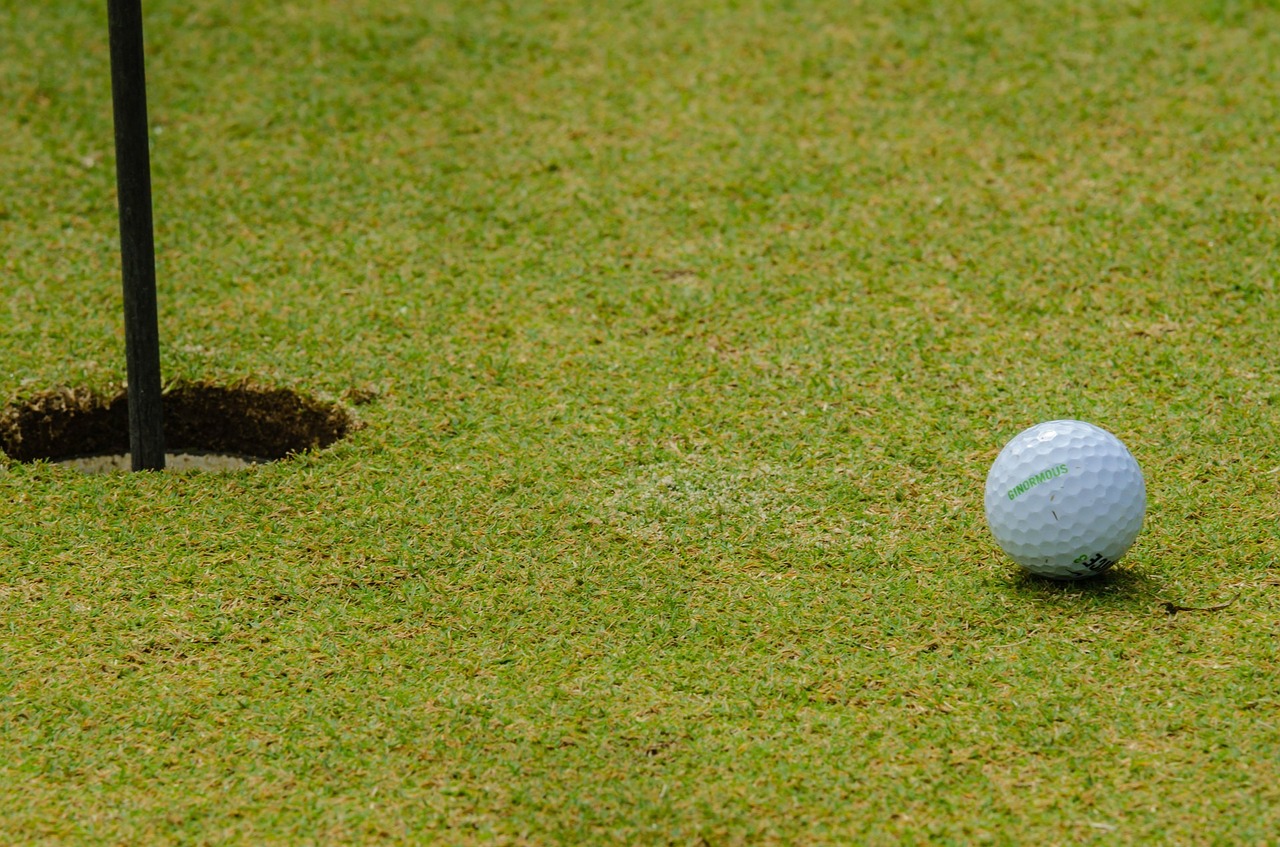If you’re a beginner, learning the basics of golf putting can be like playing in a one-man-band. You have to successfully blend different styles, processes, and elements together into one harmonious golfing symphony.
Since your posture and stance can affect how well you putt, the first thing to consider is the way you stand. To execute the ideal putt, your arms and shoulders should be left to do the majority of the work. Because stooping prevents you from swinging your arms freely, it is important for you to stand tall and with your legs slightly astride.
Some experts suggest that you spread your feet apart no greater than the width of your hips. This will ensure greater balance and mobility as you take your swing. Once you’ve adopted the right posture, finding the best position for the golf ball can make all the difference. As a general rule, the ball should be close to you, enough to make it nearly parallel to the tip of your nose. This allows you to swing at it without over-stretching your arms. The ball should also be positioned towards your stance’s left of center so that it can connect squarely with the putter’s clubhead.
How you grasp the putter also determines your putting success. Clutching it in a stranglehold could throw your swing off. By holding the club lightly in your hands, you will be able to swing it with greater comfort and ease. Therefore, your grip should, in effect, be more of a relaxed non-grip. For best results, you should treat the club as an extension of your hands.
Restraint is another element that is vital to putting. Many beginners equate golf with powerful swings. But if you take a wild whack at a ball, the odds are great that it will fly off into the not-so-distant horizon. And that is not what a good putt makes.
A putt, by definition, is a light and gentle stroke meant to cause the golf ball to roll straight into the hole. Without restraint, those light and gentle strokes won’t be easy to accomplish, let alone master. Putting, therefore, requires a lot of discipline and control. Keep in mind that your objective is to make the ball roll not fly. If you can muster Zen-like calm with each putt, then so much the better.
Another key element in putting is where you set your sights. You should keep an eye on the ball before you make your swing. But you must also take care to keep your head perfectly still during and moments after your stroke. No matter how slight, any unnecessary movement while swinging could throw your aim off and ruin your putt. Instead of physically tracking it, make it a habit to visualize the ball’s path in your mind’s eye.
Above all, practice. Whether you’re swinging on the greens or putting into a cup set on a carpeted floor, practice, practice, practice. Experiment with different speeds and distances. Set goals as to the number of balls you can sink in succession and then gradually increase your limit as you improve. Take note of the techniques that bring you the most excellent results. By constantly challenging yourself and refining your methods, you’ll eventually discover the rhythm that works best for you. Once you have that down pat, you’ll be able to compose and orchestrate a symphony of putting perfection.
About The Author
Jasmine Ong is a staff writer for http://www.golfing-advice.com – Jasmine, a pro golfer herself has also written a free e-course available on her site.


Comment here